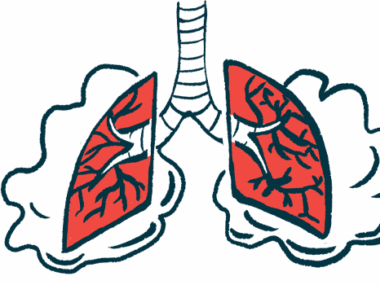NACFC 2023: Sionna’s Series 2 molecules can restore CFTR protein
SION-719, SION-451 found to normalize CFTR function in preclinical analyses
Written by |

Sionna Therapeutics’ second-generation molecules, combined with standard CFTR modulators, fully restored the production and function of the CFTR protein with the most common mutation that causes cystic fibrosis (CF), according to preclinical data.
The Series 2 molecules, SION-719 and SION-451, are undergoing investigational new drug (IND) enabling studies, meaning preclinical testing to secure regulatory approval for human trials next year.
“SION-719 and SION-451 are progressing toward clinical trials next year pending results from IND-enabling [regulatory-guided] toxicology studies,” Greg Hurlbut, PhD, co-founder and a senior vice president at Sionna, said in an email exclusive to Cystic Fibrosis News Today.
“Our Phase 1 clinical trial of SION-638 is progressing well, with data expected soon,” he added.
SION-638 is the company’s lead oral candidate, which is currently being tested in a Phase 1 clinical trial to evaluate its safety and pharmacological properties in healthy volunteers.
Most common CFTR mutation causes NBD1 to unfold, impairs CFTR function
The CFTR protein functions like a gate to control the flow of chloride in and out of cells. F508del is the most common CF-causing mutation that leads to instability in a particular region of CFTR called nucleotide-binding domain-1, or NBD1. Unstable CFTR is rapidly degraded before it can reach the cell’s surface, and thus, it is unable to function correctly.
“The most common mutation in CFTR, [F508del], causes NBD1 to unfold at body temperature and severely impairs CFTR function,” Hurlbut said.
Launched last year, Sionna plans to develop therapies to stabilize NBD1, with the goal of improving CFTR production and function. Its experimental treatment SION-638 binds to NBD1 and increases CFTR’s stability, according to preclinical studies.
“Complete pharmacological correction of [CFTR-F508del] will likely require drugs that fully stabilize NBD1, but currently approved modulators have no direct impact on NBD1 and do not fully normalize CFTR function in most people living with CF,” Hurlbut said in a company press release. “After over a decade of research, our science team discovered first-in-class modulators that directly stabilize NBD1.”
Biochemical data on the impact of SION-719 and SION-451 were recently presented at the 2023 North American Cystic Fibrosis Conference (NACFC) in Phoenix, Arizona.
This second series of development candidates appear to be highly potent, which reinforces that we are hitting the right target in NBD1. We are excited to see how these results translate in clinical trials.
Using a technique called differential static light scattering (DSLS), the researchers found both candidates increased CFTR-F508del stability by more than 16 degrees Celsius (nearly 61 degrees Fahrenheit). In comparison, SION-638 increased this stability by 10.4 degrees Celsius.
Proteins are long chains composed of amino acid building blocks that fold into specific shapes. At high temperatures, these tightly packed chains can unravel, or denature, which can be detected by DSLS. Higher denaturation temperatures mean a more stable protein.
Moreover, in a human bronchial epithelial cell (CFHBE) model of the airways, a test predictive of clinical efficacy, SION-719 and SION-451 fully restored CFTR-F508del production and channel function to normal levels when combined with one or more CFTR modulators.
“We now have an extensive set of preclinical data — including data from the clinically predictive CFHBE model — that demonstrate our NBD1 stabilizers can restore [CFTR-F508del] maturation, trafficking, and function to wild-type [normal] levels when combined with complementary modulators,” Hurlbut noted in the email.
“This second series of development candidates appear to be highly potent, which reinforces that we are hitting the right target in NBD1,” Hurlbut added. “We are excited to see how these results translate in clinical trials.”
Phase 1 testing of new molecules in development set to begin next year
Sionna is also developing molecules to be used in combination with NBD1 stabilizers and CFTR modulators that target two additional CFTR regions called the intracellular loop 4 (ICL4) and transmembrane domain 1 (TMD1). Phase 1 testing of these new molecules in healthy volunteers is set to begin next year.
The best candidates among all the company’s experimental CFTR-targeted therapies have the potential to move on to Phase 2a proof-of-concept trials.
“Preclinical results have demonstrated the activity of our NBD1 stabilizers alone and in combination with our ICL4- and TMD1-directed correctors, and standard-of-care CFTR modulators,” said Mike Cloonan, Sionna’s president and CEO. “This portfolio approach will allow us to advance the best compounds to Phase 2a proof-of-concept trials.”
Hurlbut added: “We are also continuing to advance the development of compounds targeting complementary mechanisms, including SION-109, which targets NBD1’s interface with the ICL4 region, and will be initiating a Phase 1 clinical trial in healthy subjects in the first half of 2024.”








